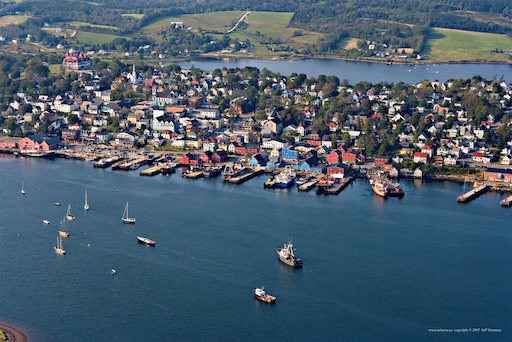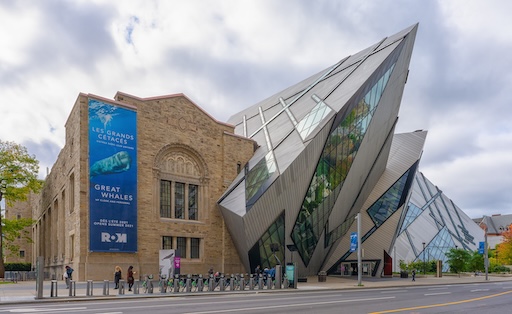
If you've ever dreamed of stepping into a postcard — all colorful clapboard houses, fishing boats bobbing on a breezy harbor, and old-timey shops that smell faintly of sea salt and wood polish — you might want to point your compass toward Lunenburg, Nova Scotia. This UNESCO World Heritage Site isn’t just a pretty face. It’s a living, breathing museum of Canada’s maritime past — where pirates once prowled the nearby waters, schooners were born, and every street whispers a salty tale.
Founded in 1753, Lunenburg is one of the best surviving examples of a planned British colonial settlement in North America. But it doesn’t just wear history on its sleeve — it wears it in bold, cheerful coats of red, yellow, teal, and lavender. It’s a town that somehow balances storybook charm and seafaring grit, where past and present walk hand in hand along the wharves.
The Color Code of the Sea
Let’s talk colors. Lunenburg is famous for its vibrant architecture — each home and shop painted in a different eye-popping shade. Originally, these bold colors helped fishermen spot their homes from the sea. Today, they’ve become the town’s signature aesthetic. Walking the streets feels like strolling through a Crayola box with a compass.
But there’s more than paint behind the beauty. The entire town layout, from its narrow streets to its grid pattern and waterfront design, has remained virtually unchanged since the 18th century. That’s why UNESCO stepped in — to protect this historical blueprint that blends European planning with North American resilience.

The Schooner That Became a Legend
No conversation about Lunenburg is complete without mentioning the Bluenose — a racing schooner and fishing vessel launched here in 1921. Nicknamed the “Queen of the North Atlantic,” she was undefeated in her class for 17 years. So iconic is this ship that you’ll find her image on the Canadian dime.
Today, you can climb aboard Bluenose II, a faithful replica, docked right at the harbor. The deck creaks underfoot like it’s telling you secrets. The sails, when hoisted, catch the same Atlantic wind that filled the lungs of generations of mariners before. Whether you sail or just admire, it’s hard not to feel a flutter of romantic nostalgia.
The Salty Soul of the Fisheries Museum
Right along the waterfront, the Fisheries Museum of the Atlantic stands like a red sea castle. Inside, it’s all lobster traps, scrimshaw, nets, and nautical lore. Retired fishermen serve as guides, weaving firsthand stories of storms, shipwrecks, and life on the high seas.
One moment you’re peering into a replica fish plant, the next you’re staring at antique diving helmets or learning how cod was once king. It’s not just a museum — it’s a crash course in the soul of Atlantic Canada. And yes, you can even pet a real live starfish in the aquarium section.

Ghosts, Gables, and Gallery Hopping
Despite its cheery colors, Lunenburg has its share of ghost stories. The town’s historic homes and inns are said to be inhabited by the spirits of sea captains, widows, and shipwrecked souls. Take a guided ghost tour at dusk — cobblestone underfoot, lanterns in hand — and you’ll start to feel the past brushing close.
But not all spirits are spooky. The town has a vibrant arts scene, with studios, galleries, and artisan shops nestled into 200-year-old buildings. Painters, woodworkers, and jewelry makers draw inspiration from the ocean just steps away. You can walk in, watch them work, and maybe bring home a piece of Lunenburg’s creative current.
A Taste of the Atlantic
You can’t write about a fishing town without writing about food. Lunenburg serves up some of the best seafood in Canada — from fresh lobster rolls and scallops to chowder that’ll warm your soul. Many restaurants overlook the harbor, offering a feast for the eyes and the stomach.
Try a bowl of Lunenburg pudding, a spiced sausage dish passed down through German settler families. Or sip some Nova Scotian wine as seagulls wheel above the bay. Here, every meal feels like an offering from the sea itself.
How to Get Lost (In the Best Way)
Lunenburg is small enough to walk but rich enough to explore for days. Start at the Old Town, a designated UNESCO site, and wander up toward Hillcrest Cemetery for sweeping views of the harbor. Or hop on a boat tour to explore the Mahone Bay nearby, scattered with pine-fringed islands and tales of buried treasure.
It’s the kind of place where you slow down without trying. The air smells like salt and paint. Locals smile and chat. Seagulls sing backup to distant fiddle music. And time… well, time simply softens around the edges.
The Wonder of What Endures
In a world spinning faster every day, Lunenburg holds still. It’s a place where history isn’t frozen — it’s alive and brightly painted, bobbing with the tide and crackling under your boots. It reminds us that heritage doesn’t have to be dusty or distant. It can be joyful. Colorful. Delicious. Tangible.
So whether you come for the schooners, the sea stories, the chowder, or the chance to step into a living diorama of maritime charm, Lunenburg will greet you like an old friend — one who knows how to listen, how to celebrate, and how to keep the past dancing in the present.
Share this story and inspire others.
Tags: Lunenburg Nova Scotia, UNESCO site Canada, colorful coastal towns, maritime heritage, hidden places in Canada, Bluenose II, fishing villages
 Magdalen Islands – Quebec’s Wind-Swept Secret in the Gulf of St. Lawrence
Magdalen Islands – Quebec’s Wind-Swept Secret in the Gulf of St. Lawrence
 Mount Robson – The Towering Guardian of the Canadian Rockies
Mount Robson – The Towering Guardian of the Canadian Rockies
 Calgary – Where Cowboy Spirit Meets Urban Cool
Calgary – Where Cowboy Spirit Meets Urban Cool
 Emerald Lake – The Hidden Jewel of British Columbia
Emerald Lake – The Hidden Jewel of British Columbia
 Royal Ontario Museum – Where Dinosaurs, Mummies, and Crystals Collide
Royal Ontario Museum – Where Dinosaurs, Mummies, and Crystals Collide
 Jasper National Park – Alberta's Untamed Wonderland
Jasper National Park – Alberta's Untamed Wonderland